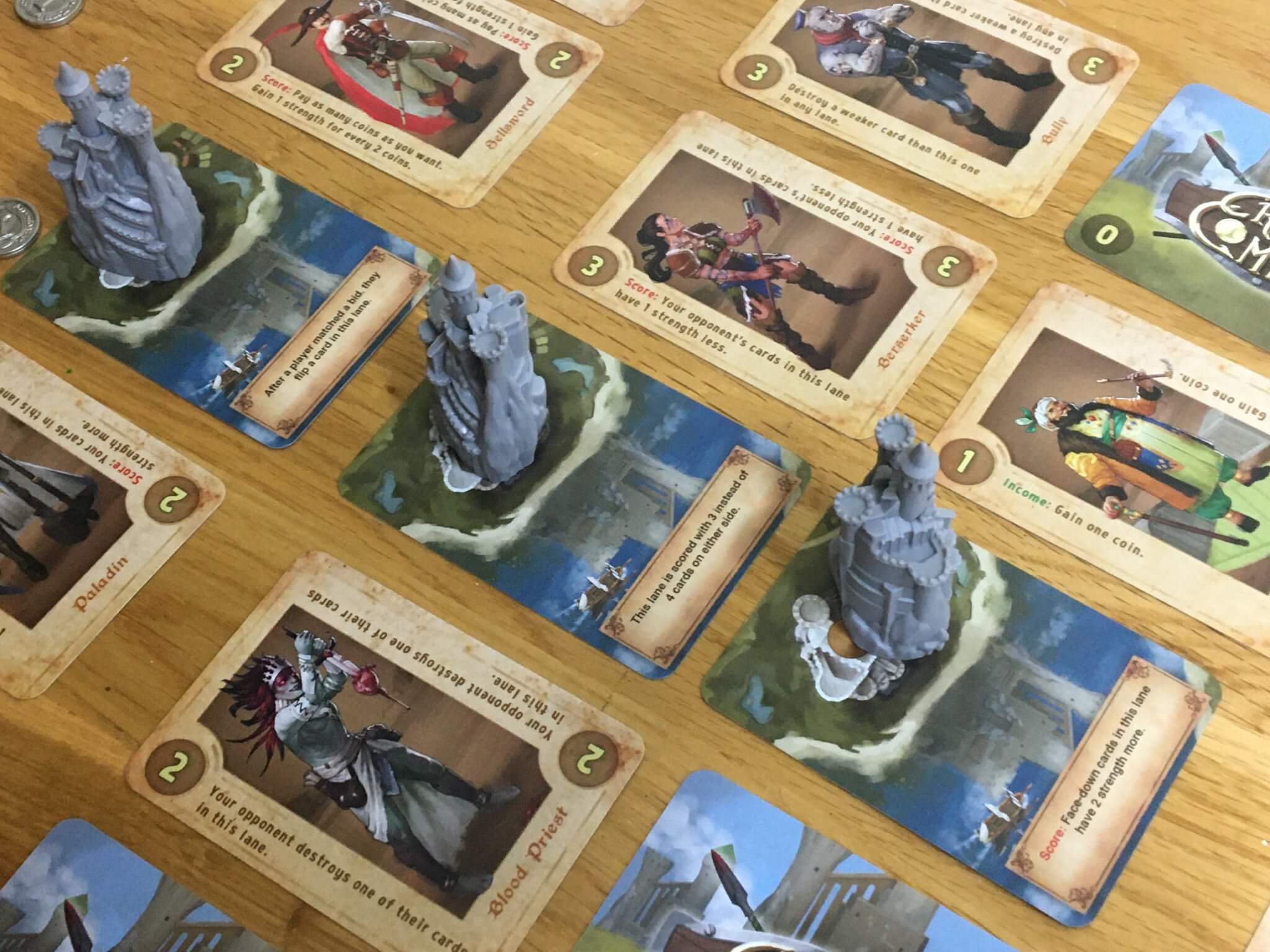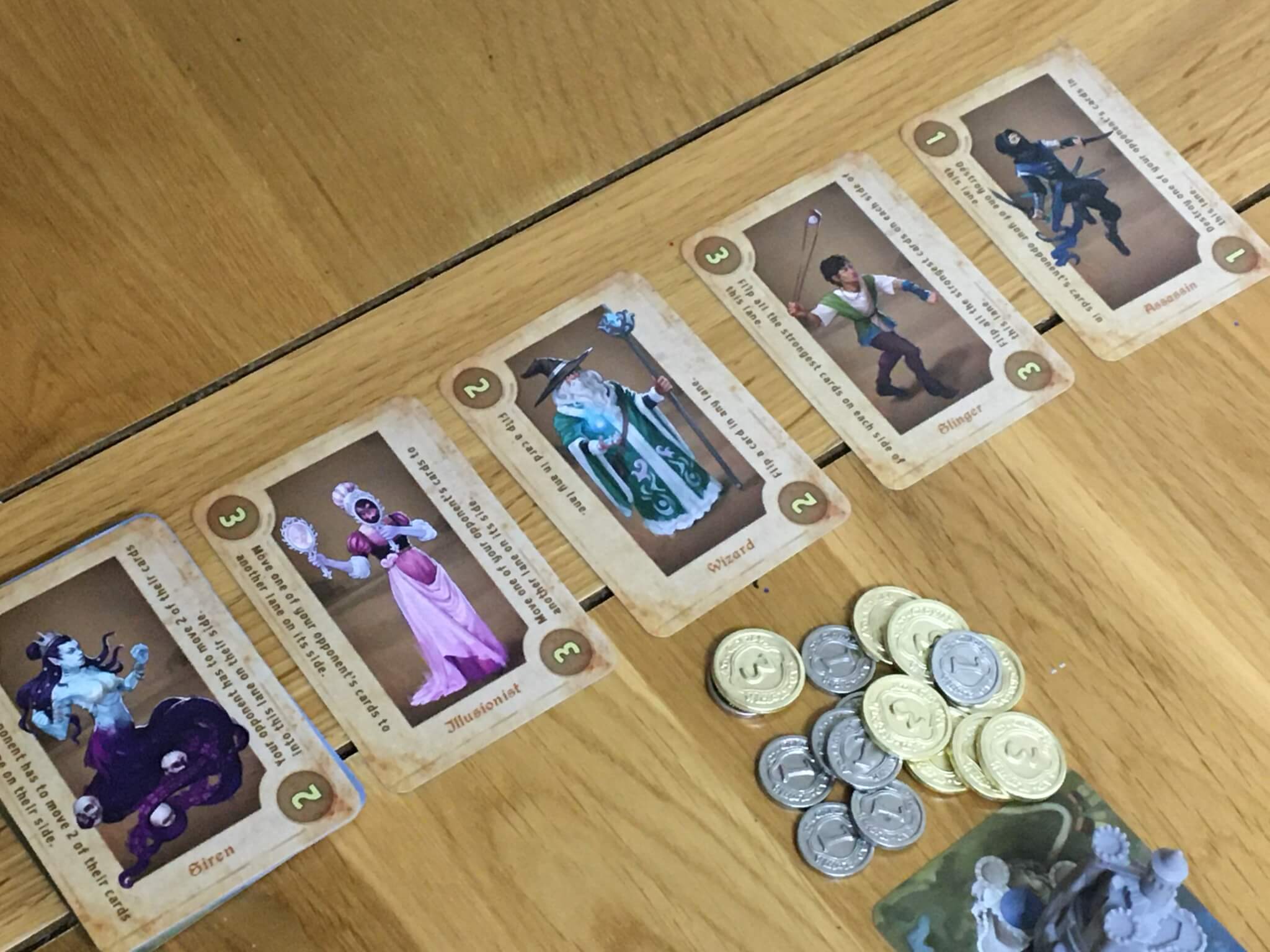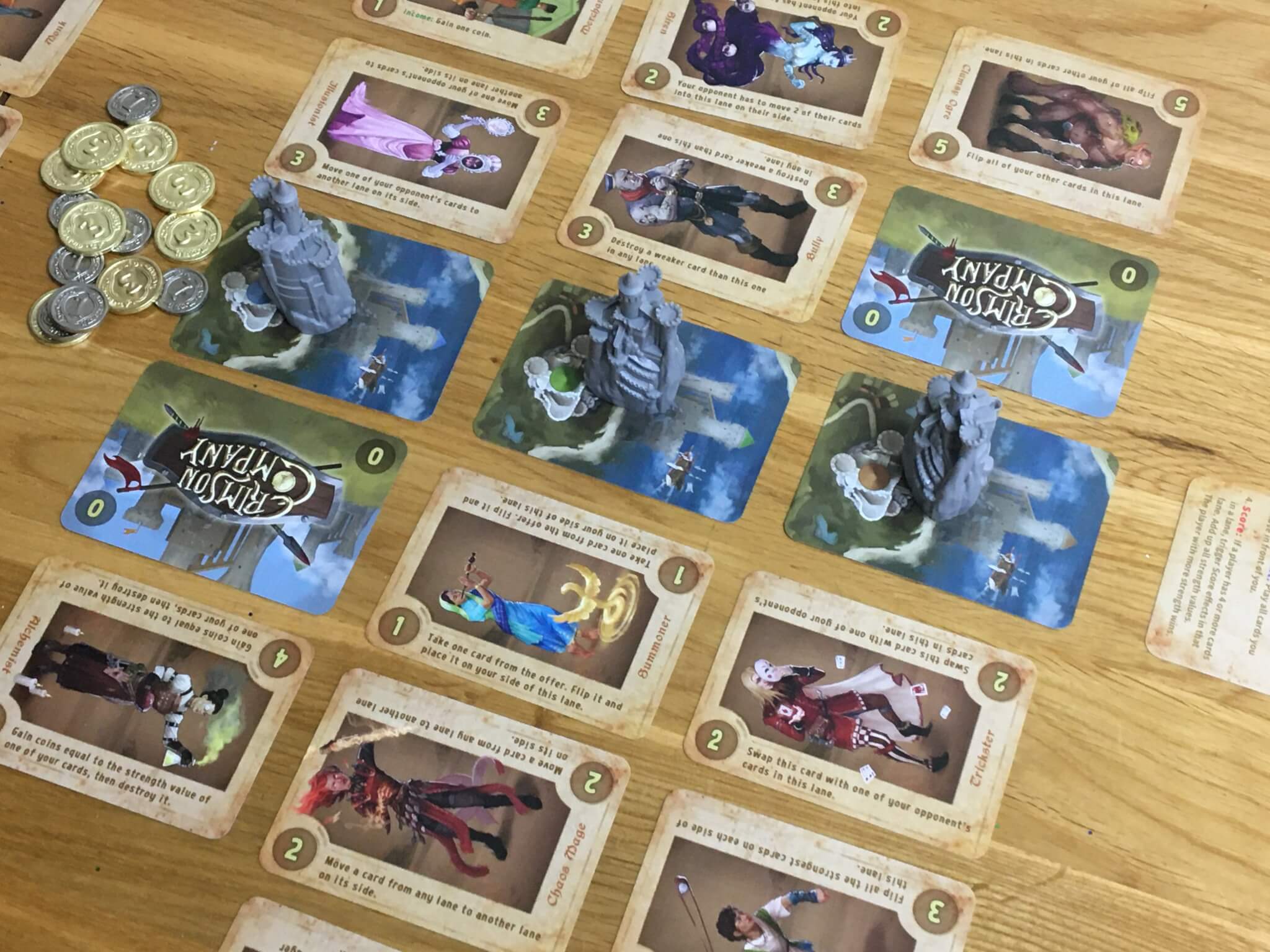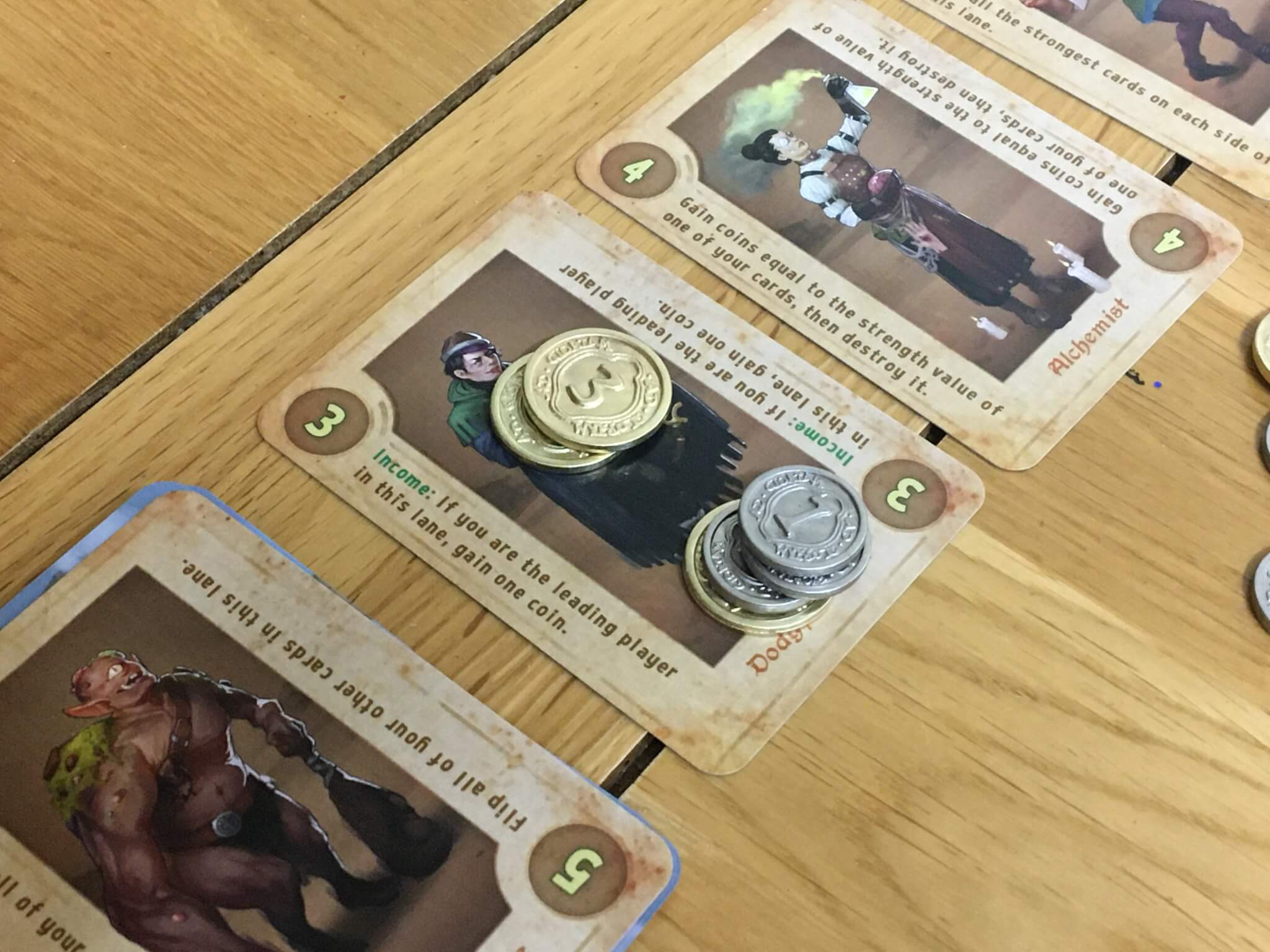Crimson Company might be the small box card game that you’ll want to spend the night with!
Crimson Company is a small box card game that centres around wagering cash and recruiting troops in order to secure control of two out of three central castles. The version you see in these pictures is the Deluxe Edition which features plastic castles (in addition to the cards that come in the base game) and gorgeous metal coins. Believe it or not, even the Deluxe Edition retails for just 20 euros, making it a bargain stocking filler.
In the Crimson Company‘s base game, each of two players takes on the role of a noble seeking fame and fortune in a new land. Three castle cards are placed in the middle of the table (either the basic blank ones, or three variant ones drawn at random from a small double-sided deck) and then the castle models are placed on top. These three castles represent the three lanes that make up the main focus of the game.
Off to the side of the castles, the players will place a shuffled stack of just over thirty recruitable characters, of which four will be drawn and placed face up as a display. The top card of the deck will also be flipped face up so that both players know what card is coming next. Off to the side somewhere, a stack of lovely coins will be placed in denominations of three and one, and the starting player takes three, whilst the second player takes four.

The game begins with the starting player taking their first income step (which is also worth three coins) giving them a total of six for their first turn. After income, the starting player performs the recruitment step, which is mandatory and involves them placing an amount of coins (as many as they like) onto one of the available characters from the display.
Their opponent (bear in mind that they only have four coins at this point) can respond by either matching the bid or passing. If the second player matches the bid, then all of the coins on the character card go back to the starting player, and the second player takes the character card. If the second player passes, then the coins placed by the first player will go back to the supply, and the first player will take the character card.
With that step done (only one character can be bought, and only the active player may bid) the next step is deployment. At this point, the starting player will place the card they bought, if their bid was successful, or if not, they’ll simply pass. The next turn begins with the second player repeating the same three steps — taking income, placing a bid, then deploying their card(s.)

It’s worth bearing in mind that at this point (and on every turn thereafter) the active player might have up to two cards to play (one recruited on their own turn and one pinched from their opponents previous turn). In these circumstances, the player can place those cards in any order they wish, and thanks to the many and varied abilities on the cards, careful thought should be given to when (and sometimes where) a card is played.
In terms of the card placement, the player deploying a card can place it in any of the three lanes aligned to a castle, and always on their side. Each lane can hold up to five cards in each lane, but at the end of the deployment phase if any lane has at least four cards in it on either side, then it will be scored. When a lane is scored, the values for each side are added up based on the numbered values of each card, and the player with the most total strength wins the lane and takes the castle card and/or miniature to demonstrate their victory.
If Crimson Company had more to it than that, it would potentially still be quite an interesting little travel game, but what makes the game really interesting is how interactive the character cards are. Every single one has its own ability that might trigger upon deployment, or during one of the named phases in the game. Often, a card with a high strength might have an ability that harms its own controller, whilst weaker characters tend to have more interesting abilities that affect the opponent.

As an example, some cards might allow the controlling player to take an extra coin during every income step, or alternatively, a character might force the opponent to pay an extra coin to the controller when attempting to steal their purchase. One card directly destroys a card in the opposing lane, whilst several cards cause other cards to flip over (which is bad when they are face down, but good when they flip back up and their ability activates again).
Crimson Company offers players an interesting mix of both tactical and strategic depth, and it really rewards players who understand the whole deck of cards and what abilities are still waiting to be seen. This is because most games will take the players through the majority of the deck, and a really key strategy is in understanding which cards combine well with others, and how.
The tactical part of play comes from the need to understand your opponents strategy and deciding when to spend coins to interrupt it, whilst the strategic element is linked to executing your own plan, saving coins for the right moment and trying to manoeuvre things in your direction.

The players will always have at least one turn from seeing a card appear in the market to having the option to buy it, and unless one player allows the other to claim all of the income cards, the economy remains very tight from turn to turn. This means that it’s usually possible to ensure that you can make a big play for a card you really want, even if it means allowing your opponent a free pass on their own turn. It’s also possible to misdirect opponents with a tactical low or high bid that might tempt them to pay you off for a card you don’t really want.
When you combine the enjoyable and surprisingly deep gameplay with really nice looks and incredible value for money, Crimson Company is a very nice addition to anyone’s collection, especially if space is at a premium in your household, or if you like to play when on the move. Even if it were not so cheap, Crimson Company is still a great game that punches well above its weight, and it’s a game that I look forward to spending even more time with over the coming months.
You can can purchase Crimson Company on their website.

Comments are closed.